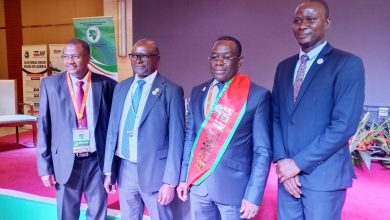EAC spurs African trade amid integration push

ARUSHA: THE 11th edition of the Assessing Regional Integration in Africa (ARIA XI) report has recognised the East African Community (EAC) for making significant strides in advancing intra-African trade.
Published on July 13th, this year, by the United Nations Economic Commission for Africa (UNECA) in collaboration with the African Union Commission (AUC) and the African Development Bank (AfDB), the report provides valuable insights into Africa’s integration progress and outlines policy recommendations to accelerate the continent’s economic transformation.
According to the report, intra-African trade accounts for only 16 per cent of Africa’s total trade, highlighting the urgent need to enhance regional and continental integration.
Among the continent’s Regional Economic Communities (RECs), the Intergovernmental Authority on Development (IGAD) leads with the highest share of intra-African trade at 36 per cent, driven largely by strong trade flows from Kenya, Uganda and significant re-exports through Djibouti.
The EAC follows closely, attributed to the gains from its Customs Union and ongoing trade facilitation efforts.
Between 2019 and 2023, the EAC recorded that 28 per cent of its merchandise exports were directed to other African countries, well above the continental average.
In the same period, 19 per cent of its imports came from within the continent, reflecting robust regional trade linkages.
However, the report notes that Asia remains the EAC’s largest trading partner, accounting for 56 per cent of exports and 64 per cent of imports, exposing the region to external market vulnerabilities but also revealing opportunities to strengthen intraAfrican trade.
The report also reveals the critical role of Informal Cross-Border Trade (ICBT), estimating that it could increase recorded intra-African trade figures by 7–16 per cent.
Informal trade makes up 30–72 per cent of total trade between neighbouring African countries, suggesting the EAC’s actual intra-African trade engagement may be significantly underreported.
ALSO READ: Global metal giants eye Dar Port for African trade
Commenting on the report’s findings, the EAC Deputy Secretary General in charge of Customs, Trade and Monetary Affairs Ms Annette Ssemuwemba expressed profound happiness for the region to top the continent in intra-African trade.
“The ARIA XI report confirms that the EAC is one of the leading regions on the continent in terms of intra-African trade. This is a testament to the strength of our Customs Union and the success of our Single Customs Territory in reducing trade barriers and facilitating movement of goods across the region and beyond.”
She added that despite this progress, the fact that the majority of the EAC’s trade remains externally oriented represents a strategic vulnerability.
“This presents a clear opportunity to leverage the African Continental Free Trade Area (AfCFTA) to build stronger regional value chains, diversify export markets and reduce exposure to global shocks,” Ms Ssemuwemba stated.
She reaffirmed the EAC’s commitment to working closely with partner states, the African Union and continental institutions to fully implement the AfCFTA and fast-track the Action Plan for Boosting Intra-African Trade.
“Strategic investments in infrastructure, harmonisation of standards and the removal of non-tariff barriers will be crucial to realising our shared vision of a more integrated, resilient and prosperous Africa,” she emphasised.
Ms Ssemuwemba also expressed appreciation to the report’s authors, saying: “We thank UNECA, the African Union Commission and the African Development Bank for their outstanding efforts in producing the ARIA XI report.
It not only documents progress and challenges but also serves as a vital tool for policymakers and stakeholders to guide collective action toward realising the African Economic Community, including the vision of a continental customs union and common market.”





